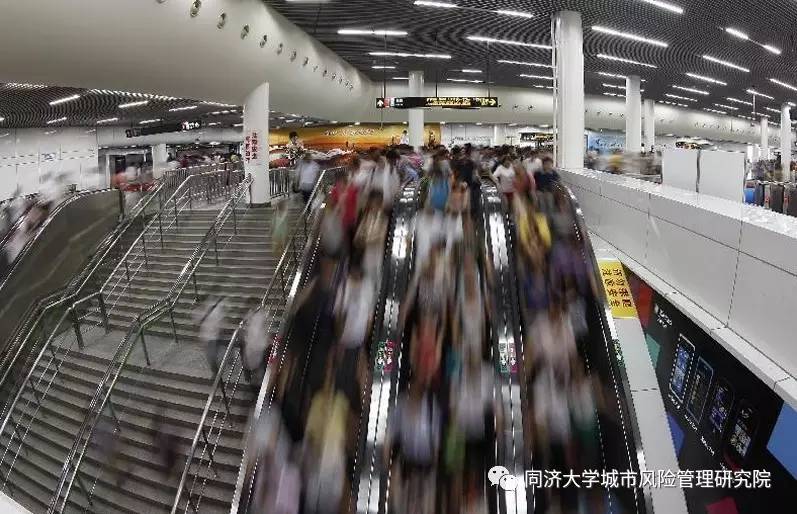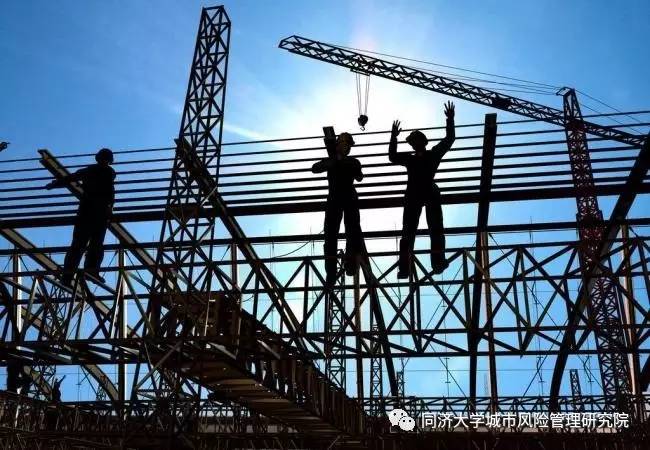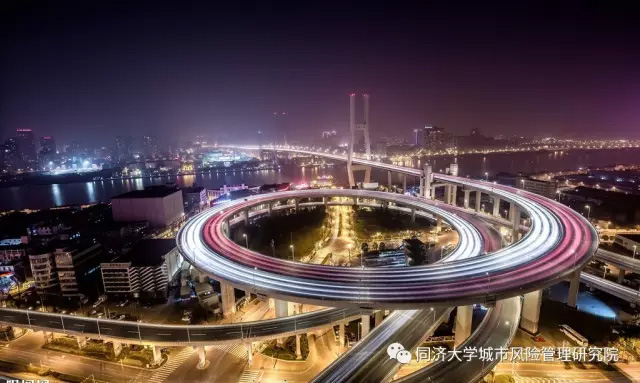In a wide range, most of the accidents occurred in various parts of the country can be included in the scope of urban safety risk, especially in the context of accelerating urbanization in China, how to control urban safety risk has become a prominent issue. In particular, large-scale cities and megalopolis are now mushroomed continually. The Beijing-Tianjin-Hebei Region, the Yangtze River Delta, the Pearl River Delta and other world-class urban agglomerations appear, the risk management of urban safety has become the basis and the safeguard for urban development. Without safety, it means there is no hope for the urban tomorrow.
Urban safety is the most important public product.
Two issues need to be considered: First, what does the urban safety risk mean to the city, its managers and citizens? Second, is the urban safety risk really without a trace? Does it fully depend on the weather? I believe that the answers are as follow:
1. It is the most basic and most important public issue to provide an environment which can guarantee the safety of public life and property. It has become the consensus of the world. If the government of any country cannot provide safety to the public, it is not a good government. All for the people is the aim of our Party, and it is also the responsibility of the communists. We must pay more attention to the management issues concerned the urban public safety risk.
2. Safety risk is predictable and preventable. There is a scientific law for safety risk. We all know that the famous American safety engineer Heinrich made the rule of 300:29:1. This rule shows that if an enterprise has 300 hidden dangers or events of breaking rules and regulations, it will certainly occur 29 minor injuries or failures, in addition to a serious injury or fatal accident. It is indicated that the event can be predicated, or even be prevented. The current urban risk management seems extremely complicated. Some people say that China has too many populations, too many cities and too large territory, with extremely uneven development. From the perspective of probability theory, the occurrence of some public safety accidents seems to be inevitable, and there is no need to fuss about. Perhaps, it is true in some part. However, what we have to do is to make a change, to establish the concept, and to improve the technology. The most critical is to build a scientific system. It is no longer the traditional model of a stopgap and piecemeal, nor is it in a remedial mode by mending the fold after the sheep have been stolen, or making up for the shortcomings and loopholes, but it is a new mode which can quantify and reduce safety risks. The public should actively participated in the integrated use of cutting-edge technology with highly scientific and theoretical model.


From "urban problems" to "urban risks"
In respect to the implementation of the spirit of central urban work conference and the focus on sustainable urban development, Shanghai should attach great importance to the construction of the urban risk management system and firmly hold the bottom line of public safety operation. Three aspects should be taken into consideration.
1. Regarding the public safety as the core of the urban risk management system, it is urgently needed by the public. It has significant Chinese characteristics, and Shanghai has the first-mover advantages. We have completed the process of urbanization in 30 years, which was completed by the western developed countries in one or two hundred years. During this period, Shanghai, as a megalopolis, has always been at the forefront of reform and opening up. However, this rapid development is a process of breaking resource leveling and breaking through the laws of nature. This superimposed risk is intensive, mobile and regional.
2. At present, the scientific assessment, prevention, response and sharing all kinds of risks are the main task of the urban risk management. We are now facing a lot of complicated risks that threaten the urban public safety than ever before. Whether natural disasters, man-made errors, or the uncertainty in technological innovation, these urban risks are ubiquitous.
3. When the city develops into a huge operating system, the occurrence of an event often causes a systematic impact. The “urban problem” has evolved into an “urban risk”. At the early stage of reform and opening up, We established safety guarantee system and other management measures to deal with “urban problem”, including environmental pollution, poor sanitation and unsecured safety. Since the SARS incident in 2003, China has gradually improved the emergency management system, and the urban management has entered the stage of emergency management. However, when the “urban problem” has evolved into an “urban risk”, the stress of risk management and control has continually increasing on the city, especially the megalopolis as Shanghai. With the development of population highly concentrated industry, high-rise buildings and important facilities are highly dense, and the capacity of rail transit is seriously overweight. Many of the “urban problems” in the past have evolved into “urban risks”. If the prevention and control is improper, it is likely to result in huge systemic effects. It is urgent to build a series of more complete and more efficient urban risk management system.


Constructing Urban Risk Management System with Public Safety as the Core
The urban risk management system with public safety as the core should be established on the basis of the existing daily safety management system and emergency management system. It should also be substantially optimized, so as to be capable of scientifically making “prevention” beforehand, effectively providing “control” in the event of an incident, and “remedy” afterwards to keep the impact of losses to the minimum. To this end, five sorts of “conversion” should be fully implemented.
1. The management concept must be converted from focusing on the event to focusing on the risk. We know that specific events cannot be predicted, but the risk can be identified. In order to minimize the risk, it is necessary to overcome the limitations of the development of management measures about specific events. The urban risk should be examined from systematic perspective, and risk analysis should be regarded as the basis for policy making and management. At present, it is particularly necessary to strengthen urban risk awareness education in a variety of forms for the community, especially leaders at all levels.
2. The principle of response needs to be converted from the habit of “making remedy” to “taking precaution” conscientiously. It is well-known that “he who does not think of the future is certain to have immediate worries”. In the current complex environment, nothing can be improved by trusting in luck, and people should pay attention to potential problems for every event, estimate the possible consequences, and “prepare for the worst, hope for the best”. The Government should give more consideration to financial investment on the implementation of “taking precautions”, and make institutional arrangements.
3. The focus of work shall be converted from simply dealing with “emergency afterwards” to making “prevention and control beforehand and in the event of an incident”. When it comes to the stage of urban risk management, it is necessary to pay attention to daily management and emergency management, in addition to the management beforehand and in the event of an incident. The analysis and activating mechanism for early warning index of urban operational risk should be set up at the municipal level as soon as possible. The integration analysis of urban risk can be implemented by means of big data. Real-time early warning is possible for contingent risks, and countermeasures can be taken in a timely manner.
4. The main work should be redirected from unilateral authority dominance to encouraging social participation and making the market mechanism effective. Urban risk management requires unified planning and guidance from government departments, and must not be a “one-man show” played only by the government. Unilaterally, with its manpower, material and financial resources alone, the government is unable to fully cope with the stress of complex risks. It is necessary to give full play to the decisive role of the market in resource allocation, and to encourage the full participation of social organizations, grassroots communities and the general public. For example, insurance mechanisms involved risk management and third-party implemented risk assessment practices should be fully promoted and applied in the engineering construction, municipal facilities operation and maintenance, communication and transportation and other fields on the basis of the pilot project in previous years, so as to reduce the probability of accidents.
5. The relationship between government and communities should be improved from merely taking a passive role in dealing with crisis of public relations to taking an active role in assuaging the concerns of the public. Once a crisis occurs, it is necessary to tell the truth and guide public opinion at the beginning, which is an important task for urban managers. With the rapid development of the Internet and social media, the spread of information after any given incident is now different from that of the past, and the speed at which the formation of public opinion occurs is also much faster than that of the past. In this regard, the urban management should get rid of the negative state of crisis public relations in the past, and it should have a more active and positive attitude to guide the public opinion. It is necessary to make full use of new media means, and to disclose authoritative facts and core information to guide public sentiment. Likewise, in their daily work of innovation, the urban government should comprehensively apply social media and other means to maintain effective communication between the government and the public, and to guide the public to become strong supporters and co-participants in urban risk management.

Author: Sun Jianping, Standing Member of the Shanghai Committee of the CPPCC, Director of the CPPCC Shanghai Committee for Population, Resources and Environment Construction, and Dean of the Institute for Urban Risk Management of Tongji University (URMI).

